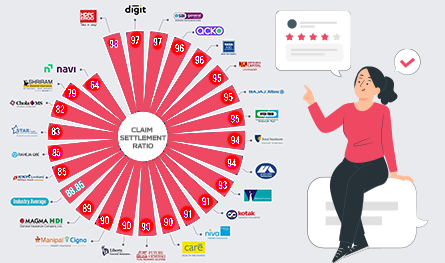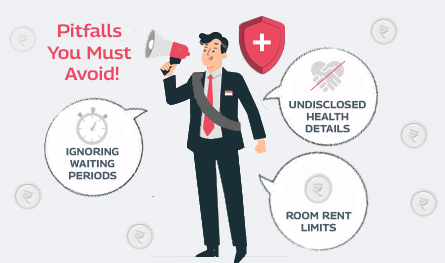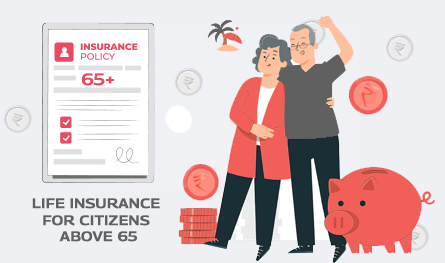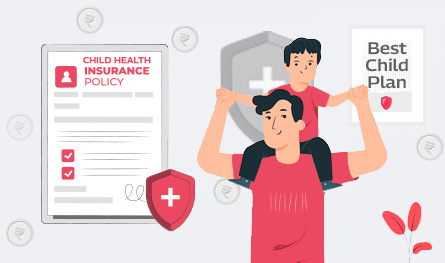Related Articles
 Jan 08, 2025
Jan 08, 2025
Is Varicose Vein surgery covered under the health insurance policy in India
 Health Insurance
Health Insurance

Health insurance is a critical financial safeguard, but choosing the right provider requires more than just comparing premiums. One of the key factors to consider is the Claim Settlement Ratio (CSR) and Incurred Claim Ratio (ICR). These metrics indicate how well an insurer honours claims, but they should not be the only criteria. This article explores the importance of these ratios, industry data, and how you can ensure a smooth claim process.

CSR represents the percentage of claims settled by an insurer in a given financial year. A higher CSR means a greater likelihood that your claim will be approved.
Example: If an insurer receives 10,000 claims and settles 9,500, the CSR would be 95%.
ICR reflects the total claims paid by an insurer as a percentage of the total premium collected in a year. A very high ICR (over 100%) indicates the company is paying out more than it earns, which could raise sustainability concerns. Conversely, a very low ICR may suggest that the insurer is stringent in claim approvals.
Example: If an insurer collects ₹1,000 crore in premiums and pays ₹800 crore in claims, the ICR is 80%.
A Claim Settlement Ratio can never be more than 100%, but the incurred claim ratio can be.
While high CSR and balanced ICR indicate reliability, they do not guarantee seamless claim settlement. Other factors like hospital network, customer service, exclusions, and ease of claim processing should also be considered.
Industry Snapshot: Claim Rejections & Repudiations
These figures highlight the importance of choosing insurers with efficient and transparent claim processes.
1. New India Assurance (Public Sector)
2. Aditya Birla Health (Standalone Health Insurer)
3. Top Private General Insurers
While Claim Settlement Ratio (CSR) and Incurred Claim Ratio (ICR) are important, they are not the only metrics to consider when selecting a health insurance policy. Here are other crucial factors:
Even the best insurance policy won’t be useful if your claim gets rejected due to avoidable mistakes. Follow these steps for a hassle-free settlement:
Young and healthy? Find out which of these plans rewards you with lower premiums. Click here to check now!

Paybima Team
Paybima is an Indian insurance aggregator on a mission to make insurance simple for people. Paybima is the Digital arm of the already established and trusted Mahindra Insurance Brokers Ltd., a reputed name in the insurance broking industry with 21 years of experience. Paybima promises you the easy-to-access online platform to buy insurance policies, and also extend their unrelented assistance with all your policy related queries and services.


Health insurance plans are purchased with the hope of medical protection in times of need. However, sometimes it ends up being a source of surprise and disappointment. This mostly happens when people rush to buy health insurance plans, often overlooking essential aspects. Ignoring waiting period clauses, misunderstanding exclusions, and being unaware of sub-limits can lead to unwanted problems in the future.


Term insurance is an important investment. However, with the availability of so many insurers offering term plans, it becomes difficult to select the best term plan to suit your needs. Buying a term plan needs some consideration and research on the part of the policyholder. In this post, let us discuss the best term insurance providers in India.


If you think of life insurance, chances are you are picturing something people buy in their 30s or 40s. But what if you are 65 or older and just getting started? The good news is that you are never too late. Whether you are thinking of easing the financial burden on your family, covering final expenses, or simply leaving behind a legacy, there are life insurance options tailored just for you.
This article will be a guide to life insurance for senior citizens above 65 years, explaining why it is important, the type of insurance options, and how to get the right policy for you.


As any parent will tell you, kids come with two things: endless energy and absolutely no sense of self-preservation. From scaling chairs and tables like mountaineers to catching germs within a five-mile radius, kids really know how to keep everyone on their toes. Now, it is understandable you are worried. As much as we would love to wrap our small ones in cotton wool and keep them safe forever, real life has other plans.

.png)
It is very important to know the car insurance cost in India so that you can find the affordable policy that you are looking for in this case.
